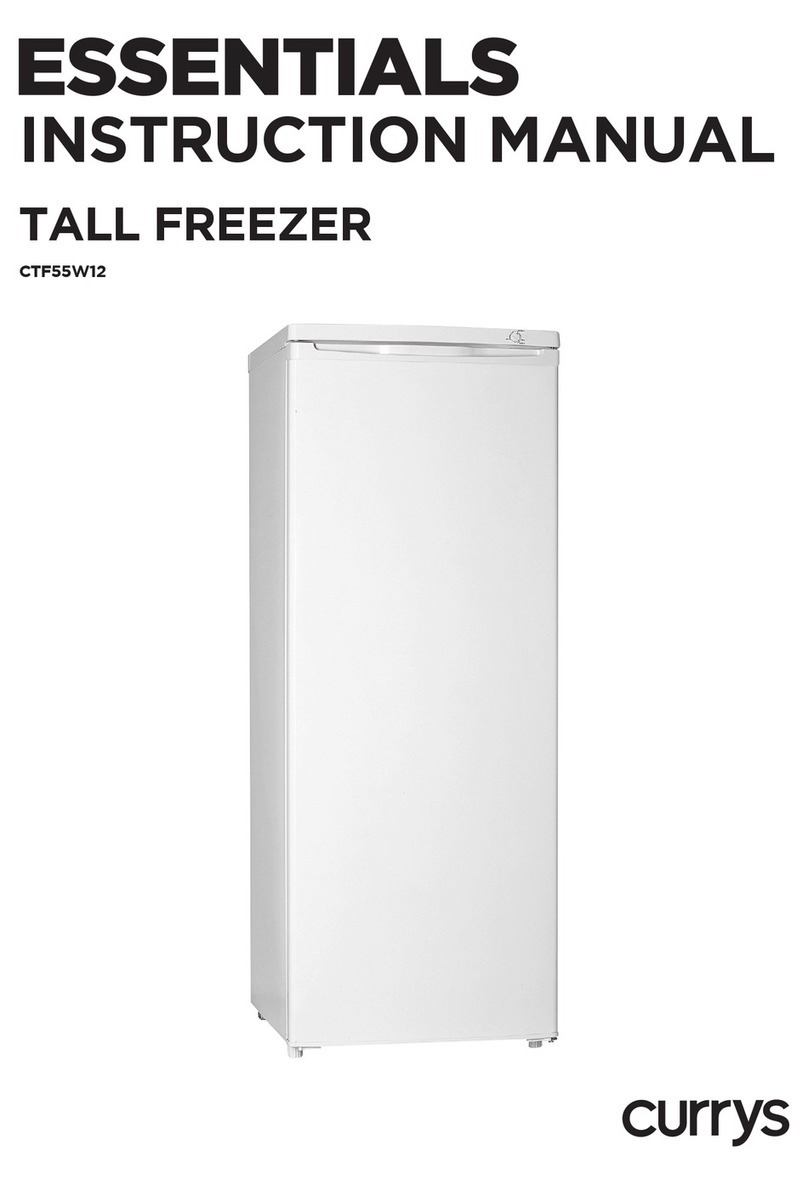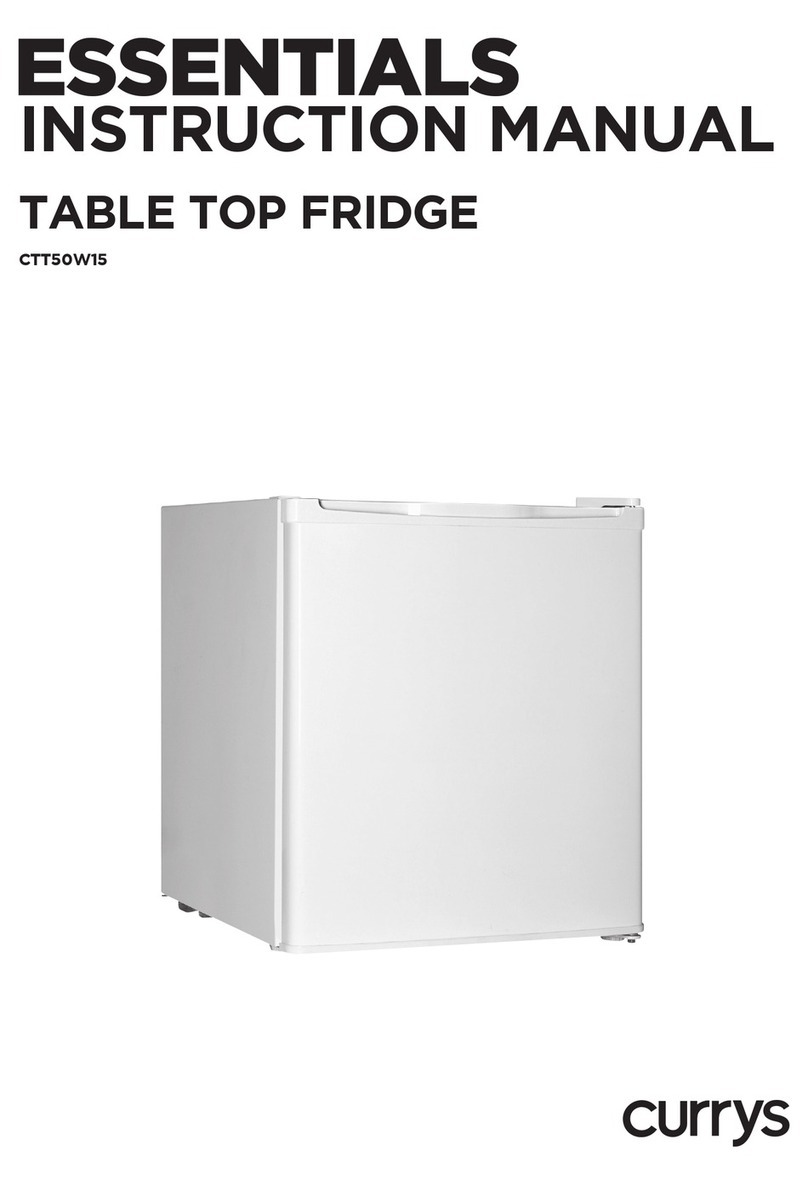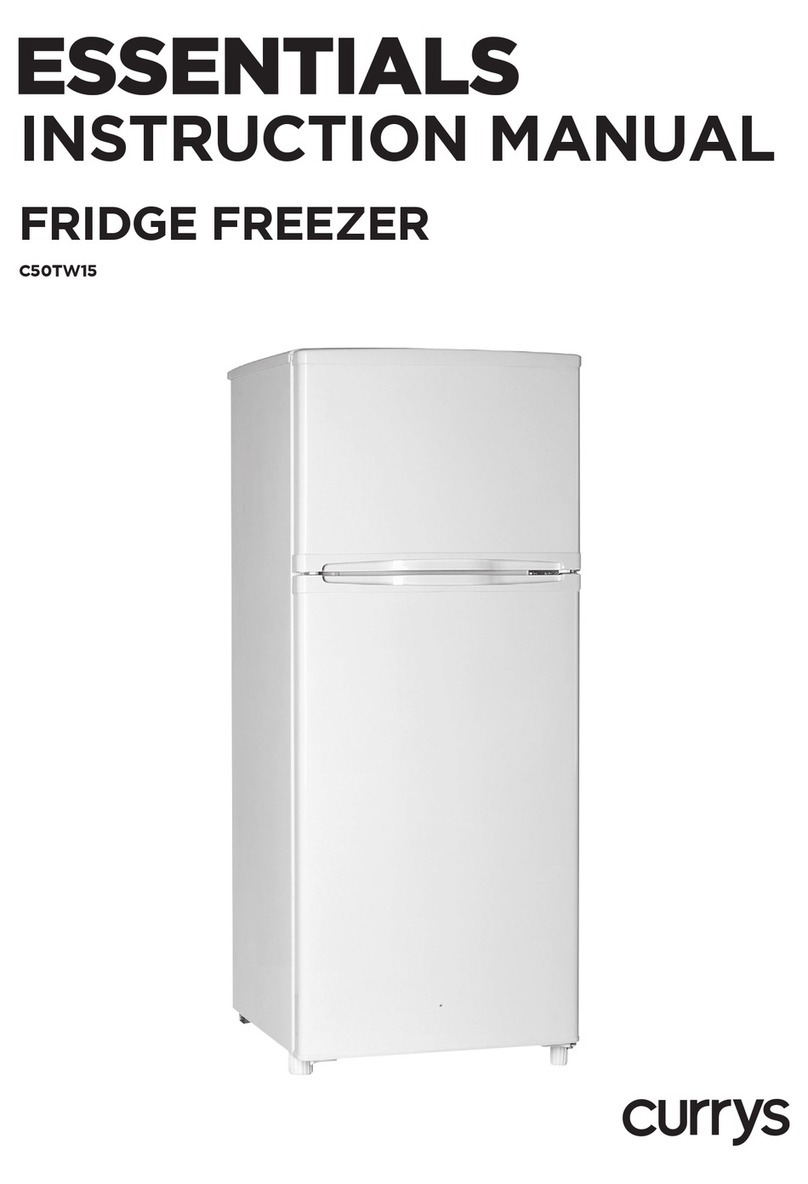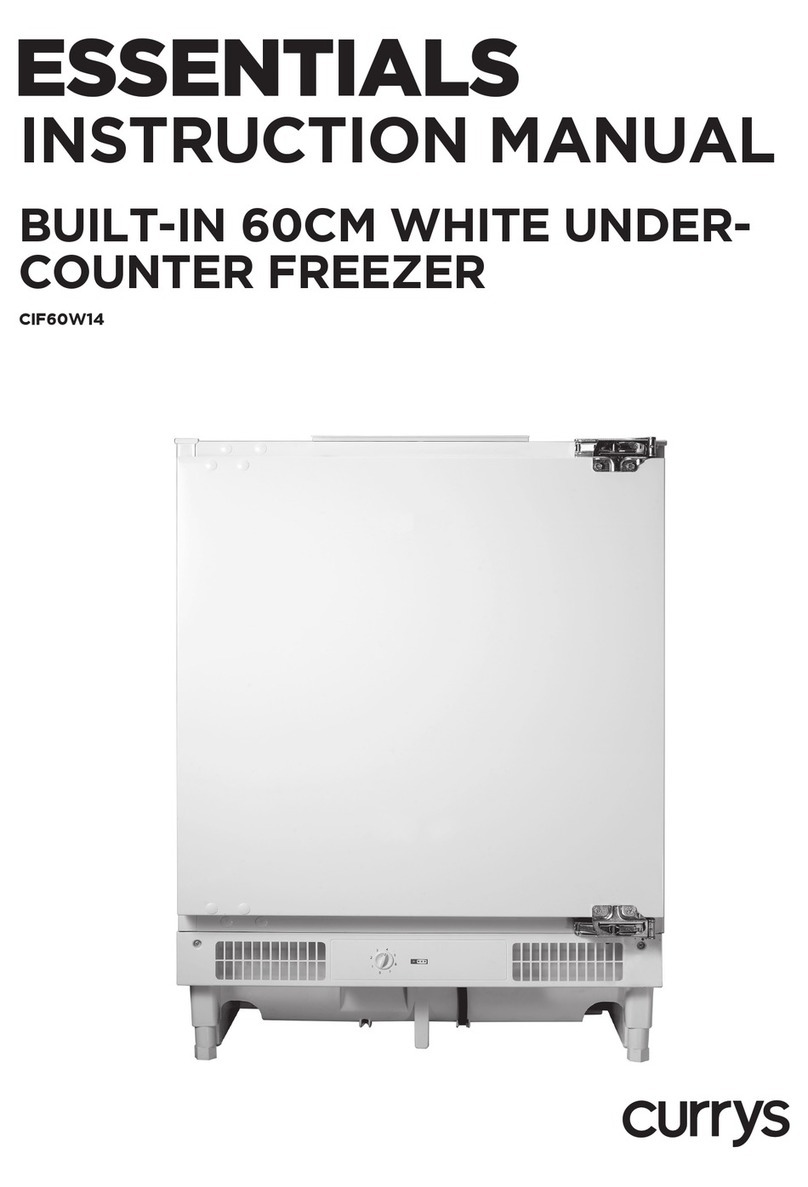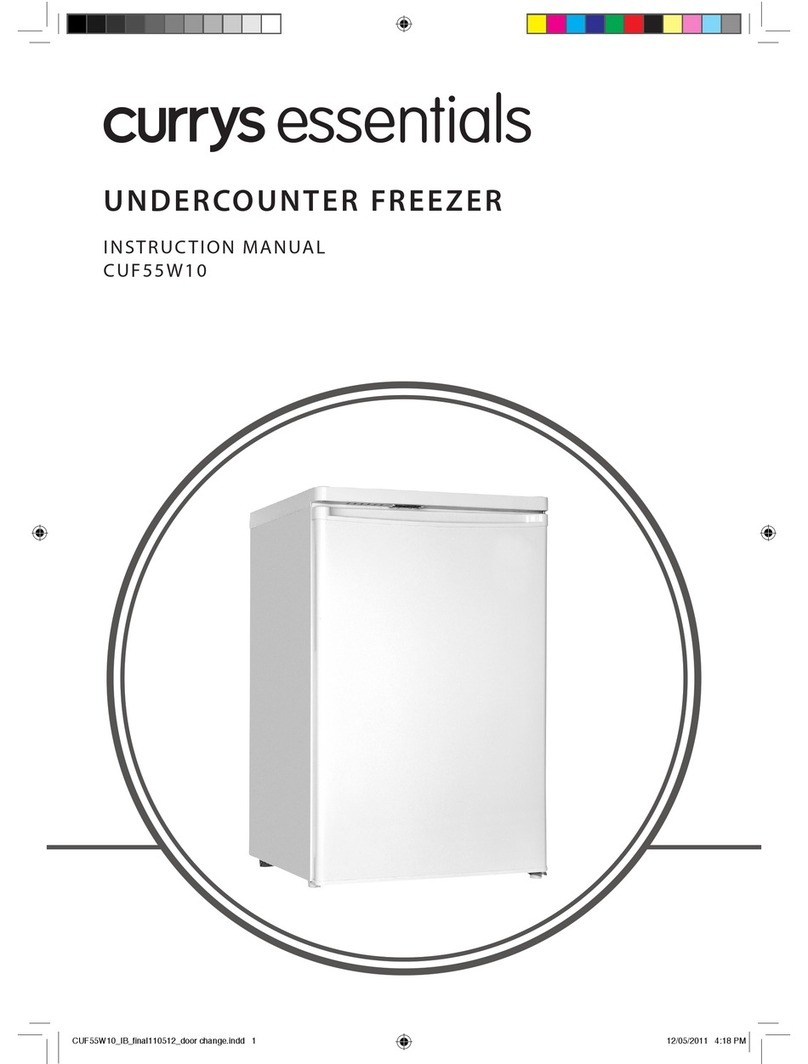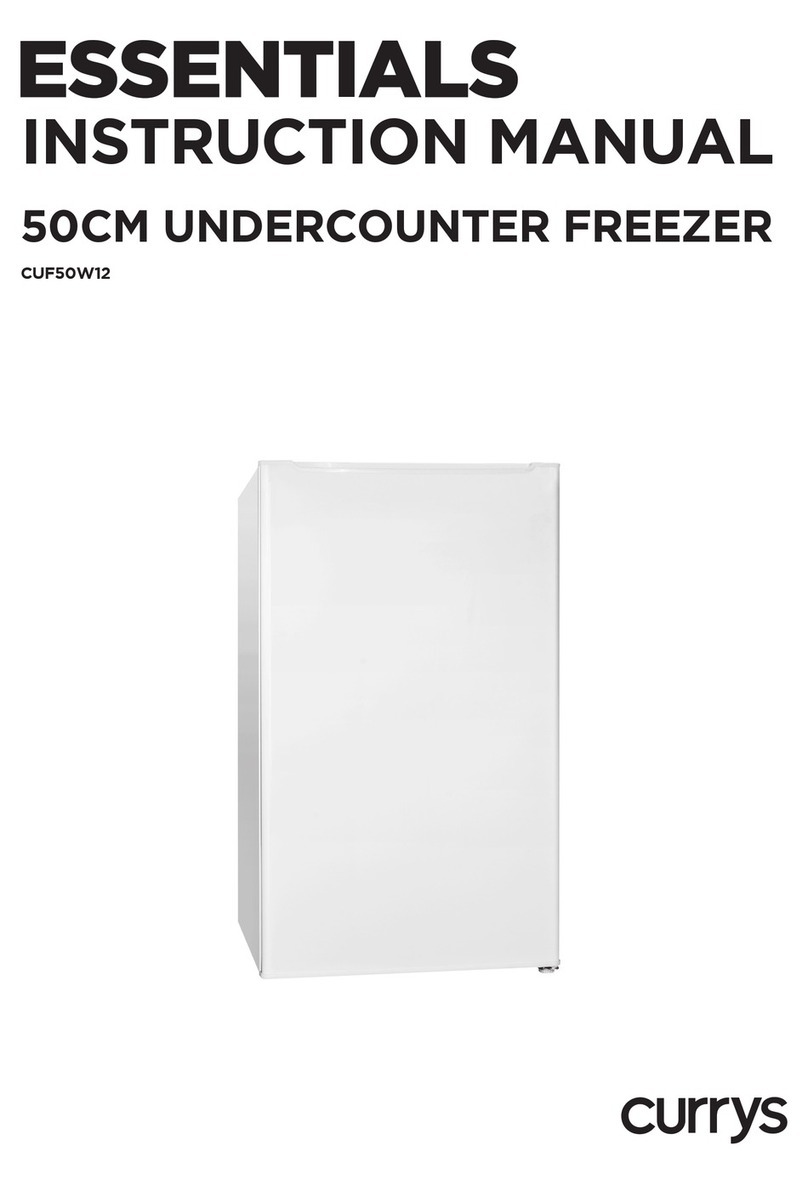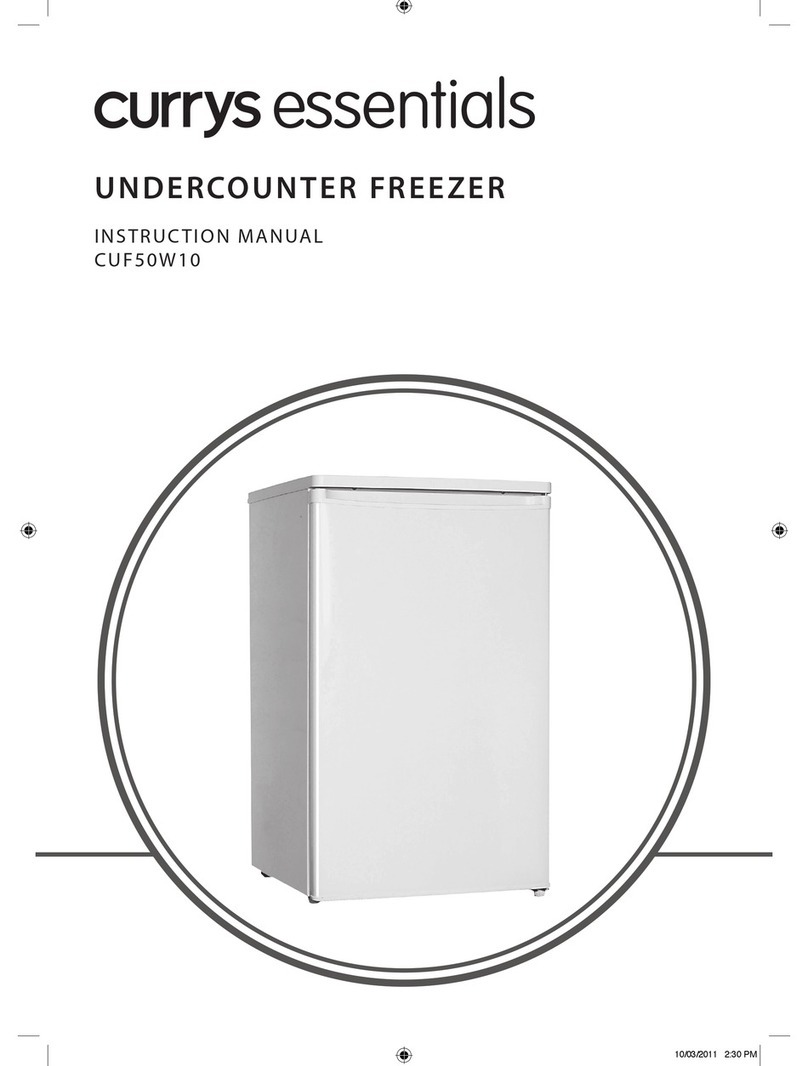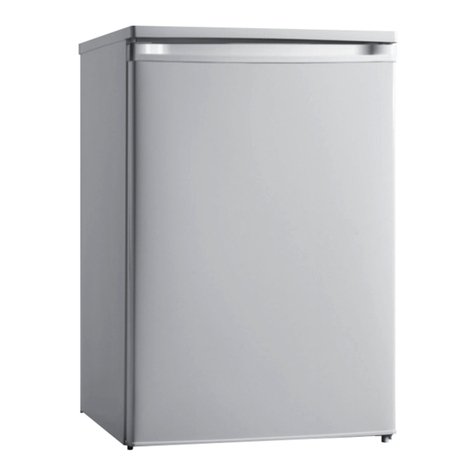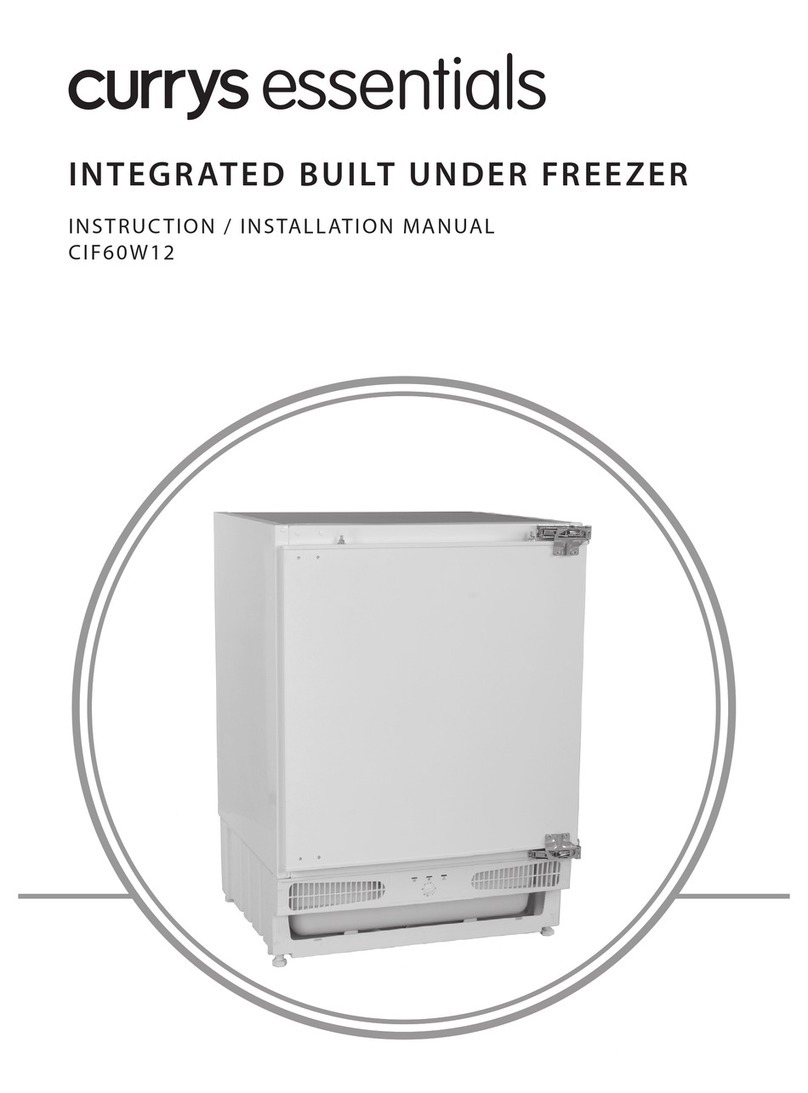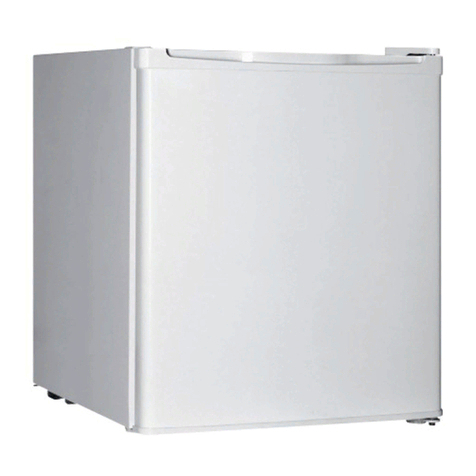9
Noises Inside the Unit!
You may notice that your unit makes some unusual noises. Most of these are perfectly normal,
but you should be aware of them!
These noises are caused by the circulation of the refrigerant liquid in the cooling system. It has
become more pronounced since the introduction of CFC free gases. This is not a fault and will
not affect the performance of your unit. This is the compressor motor working, as it pumps the
refrigerant around the system.
Tips for Keeping Food in the Unit
• Cooked meats/fishes should always be stored on a shelf above raw meats/fishes to avoid
bacterial transfer. Keep raw meats/fishes in a container which is large enough to collect
juices and cover it properly. Place the container on the lowest shelf at the bottom of the
fridge compartment.
• Leave space around your food, to allow air to circulate inside the compartments. Ensure all
parts of the unit are kept cool.
• To prevent transfer of flavours and drying out, pack or cover the food separately. Fruit and
vegetables do not need to be wrapped.
• Always let pre-cooked food cool down before you put in the unit. This will help to maintain
the internal temperature of the unit.
• To prevent cold air escaping from the unit, try to limit the number of times you open the
doors. We recommend that you only open the doors when you need to put food in or take
food out.
Preparations for Freezing
• Use quality food and handle it as little as possible. Freeze food in small quantities as it freezes
faster, takes less time to defrost and enables you to control the quantity you need better.
• Leave cooked food to cool completely. Chill food before freezing if possible.
• Consider how you will want to cook the food before freezing it.
• Don’t freeze food in metal containers if you may want to microwave it straight from the
freezer.
• Use special freezer bags, freezer film, polythene bags, plastic containers, and aluminium foil
(heavy duty grade only). If in doubt, double wrap your food. Don’t use aluminium foil for
acidic foods, e.g. citrus fruits. Don’t use thin cling film, glass, or used food containers without
cleaning.
• Exclude as much air from the container as possible. You could buy a special vacuum pump
which sucks excessive air out of the packaging.
• Leave a small amount of air space when freezing liquids to allow expansion.
• You can use the space in the freezer most efficiently if you freeze liquids (or solids with
liquids, e.g. stew) in square blocks. This is known as “Preforming”. Pour the liquid into a
polythene bag which is inside a square sided container. Freeze it, and
then remove it from the container and seal the bag.
• Label your frozen foods as they will look the same when in frozen state.
Use special fridge freezer tapes, labels and pens with different colours.
This allows you to easily organise and to effectively use the freezer.
Write the contents and date; otherwise the frozen food might exceed
the storage time and this could cause food poisoning. Please refer to
your food packaging for the recommended storage time.
• You may also add the weight and cooking notes, e.g. “defrost first”,
“cook from frozen” and keep a separate log of what is in each drawer.
This will save opening the door and searching around unnecessarily.
C61CF13_IB_130122_chris.indd 9 23/1/13 12:31 PM
